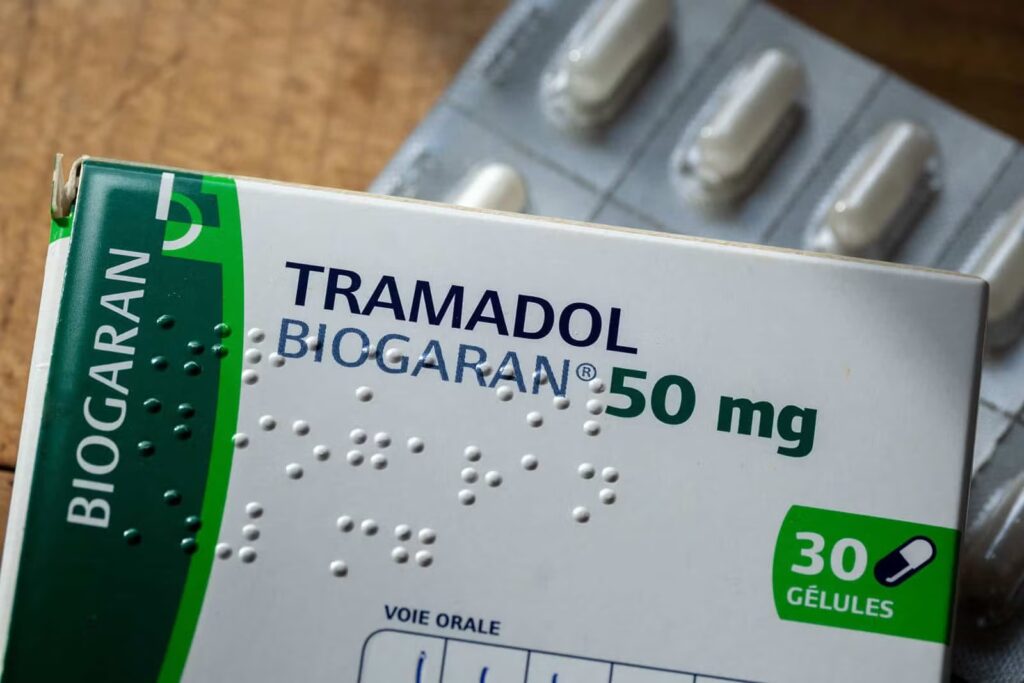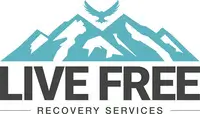Tramadol Addiction Treatment in New Hampshire
Tramadol dependency is an ever-growing concern among all age brackets alike.
Home > Antidepressants > Tramadol
Tramadol dependency is an ever-growing concern among all age brackets alike. Drug abuse statistics note that nearly 10 million people aged 12 and up abuse prescription drugs such as tramadol. Studies have further concluded that an average of 38 lives per day are claimed by opioid-based substances. Cases of tramadol addiction can be concealed as many may unknowingly have Tramadol-based prescriptions in their drug cabinet. Understanding how tramadol addiction makes itself apparent can help prevent a loved one from developing a dangerous habit.
What is Tramadol?
Tramadol is a potent prescription painkiller that, in a sense, hijacks the central nervous system to alleviate and eliminate severe pain. Usually prescribed in the form of tablets or capsules, Tramadol is intended to treat chronic pain. However, its intoxicating properties in elevated doses make tramadol addiction a risk to any who are prescribed. The drug’s ability to replace anxiety with a sensation of sheer relaxation puts its intoxicating properties at risk of addiction and abuse. It raises the amount of the brain’s feel-good neurotransmitters, serotonin and norepinephrine, encouraging people to continue taking it since it makes them feel “happy all day.” Furthermore, if carelessly disregarded, tramadol addiction not only poses a threat to yourself but to anybody with access to your prescriptions.

When the Food and Drug Administration (FDA) approved tramadol in 1995, it was not deemed a controlled substance. After years of reports of people diverting the medicine for illicit use, tramadol was reclassified as a Schedule IV controlled substance in 2014, indicating that it has a known potential for abuse and dependency.
What are the Effects of Tramadol on the Body?
Tramadol effects vary by the user. For some, it can cause drowsiness due to its widely known calming sensations. For others, this numbing calm can keep them awake. However, with continued use as it pertains to tramadol addiction, indulgence is accompanied by unpleasant and oftentimes harmful side effects. These side effects include but are not limited to nausea, vomiting, disorientation, heart palpitations, and irritability.
In extreme/fatal cases of overdose, asphyxiation, and seizures are possible due to the drug’s effect on slowed breathing and oxygen deprivation of vital organs. The long list of unpleasant side effects may make you think it would be easy to stop using tramadol. However, when it comes to the body developing a tramadol addiction, the craving and withdrawal symptoms can be even more unpleasant to bear. Even people with no history of substance abuse can find themselves addicted to Tramadol.
Furthermore, due to the drug’s potency, tramadol addiction is easy to acquire with even the smallest of doses. All the more reason why it is vital to understand that nobody is exempt from developing a chemical drug dependency.
As tramadol overloads your brain’s “pleasure center,” it causes premature flooding of “feel good” cells to release throughout the body. Over a short period of excessive or moderate use of tramadol, your body and mind adapt to this unhealthy interference from tramadol compounds. This causes harmful, long-term mental alterations to your brain’s chemical balances. Substance use disorders—like those involving tramadol—are not always easy to recognize.
This disruption of neuronic balance suddenly causes tramadol to be an unhealthy necessity with the newly-acquired dependency. Stopping tramadol use without medical aid puts you at risk for numerous painful withdrawal symptoms. But you don’t have to suffer. Live Free Recovery treatment programs can be your key to minimal or no withdrawal symptoms along with a happy path to sobriety.
What are the Symptoms of Tramadol Withdrawal?
For every high, there’s a low in the form of discomforting withdrawal symptoms. Tramadol addiction brings about unmistakable physical symptoms of discomfort upon cessation of use. Symptoms of tramadol withdrawal are similar to symptoms of opioid withdrawal. Inpatient and outpatient treatment centers have proven effective for opioid addiction treatment.

In as little as 12 hr removed from your previous use, withdrawal symptoms can present themselves in one or multiple ways. Because of this fact, tramadol detoxification should never be attempted without the assistance of a trained professional. Doing so often results in accelerating your tramadol addiction to even higher, more dangerous levels.
Call your doctor if you experience any discomforts that follow when stopping the use of tramadol. This is because it is likely a sign of tramadol withdrawal symptoms and addiction. It’s easier to cope with these symptoms of withdrawal from tramadol with help from a therapist.
Depression
Depression and thoughts of suicide, or an overall saddened mental state upon cessation, is a common tell-tale sign of tramadol addiction. When your body is deprived of the very drug on which it has developed a dependency, it destabilizes the brain’s natural balance of mood frequencies. This is, for lack of a better term, the crash from the high that often causes the user to continually use. Sadly, tramadol addiction is often a habit formed to fend off depression withdrawal symptoms brought upon by the drug itself and can be life-threatening.
Increased Anxiety
Another troubling withdrawal symptom of tramadol that affects neuronal activity and trickles down into other dangerous mental health defects is elevated anxiety. The chemical imbalances in the brain induced by tramadol addiction cause overstimulation of stress neurons when your body goes too long between uses of the substance. Elevated anxiety puts added strain on your heart and other vital organs, which can lead to panic attacks. Because of tramadol withdrawal, self-attempted recovery from tramadol addiction without a trained professional is a dangerous and potentially fatal endeavor.
Body Aches
When your body has developed a chemical dependency on tramadol, a prolonged absence of the drug produces painful body aches. These muscle aches are your body’s response to cravings. The good news is, with Live Free Recovery, you don’t have to suffer. A loving recovery specialist can prescribe medications that help minimize and, in some cases, eliminate body aches that are associated with tramadol addiction.
Insomnia
If you have trouble sleeping after abstaining from tramadol use, you are likely suffering from tramadol withdrawal symptoms. Lack of sleep or restlessness is a withdrawal symptom most substance abusers struggle with. But you don’t have to face recovery from tramadol addiction without sleep.
Your answers to alleviating tramadol withdrawal symptoms rest in the hands of our compassionate team at Live Free Recovery. Make insomnia a thing of the past. A long night’s sleep with unparalleled joys of sobriety can be a part of your present and future by reaching out for help from us today.
Increased Irritability
A sure indication that you or someone you love is suffering from tramadol withdrawal and addiction is an increase in irritability. Tramadol withdrawal symptoms, such as irritability, are oftentimes ever-present in between drug uses.
Tramadol’s effects are as equally detrimental to you when the drug wears off as it is while under the influence. That is to say when the drug wears off, tramadol triggers an irritable response in your central nervous system. For every sensation that you feel while under the influence of tramadol, the withdrawal symptoms are even more intense.
What is the Link Between Tramadol and Alcohol Addiction?
Because tramadol and alcohol both have similar depressive effects on your central nervous system, indulging in one poses a risk for indulging in the other. When one has become fixated on chasing the highs of tramadol( or alcohol), it opens the door to acquiring a physical dependency that’s in addition to the use of the other one.

With alcohol addiction being the most prominent one in the world and tramadol being prescribed to over 30 million people per year, coinciding addictions are highly plausible. Obviously, drugs and alcohol never mix and often lead to fatal consequences. The way that alcohol enhances tramadol’s effects, though, makes the user easily susceptible to overdose, causing damaging counteractive effects that are irreversible.
How Do You Treat Tramadol Dependency?
Contrary to what you may think, there are many viable and efficient treatment options for individuals who struggle with tramadol abuse. The approach to treatment depends on the individual and what is the best fit for his or her unique circumstances. Medication is available to treat tramadol dependence. Maintenance medications, such as methadone and buprenorphine, may be considered to ease withdrawal symptoms without producing a “high.”
The type of treatment and knowing what to choose as it pertains to the individual’s struggle with tramadol addiction are the most important. Speak to a treatment assessment specialist today to determine which of the following treatment facilities and methods is right for you.
Detox Programs
For a thorough cleansing of substances and their addictive properties, detoxification is a necessary first step to achieving sobriety. It is highly recommended to detox in an inpatient, medically supervised detox center. Detoxification equips the addicted with the tools to cope with the uncomfortable side effects that come with the bodily cleansing process. With a newly established clarity of mind and body, you can take your recovery to the next level and beyond after detox.
Rehab Programs
There is a distinct discrepancy between detox and rehab programs. Attending rehab programs is the next step in recovery after detoxification. With various types of rehab options available, there’s sure to be a program that fits your needs and your budget. Talk to a rehab expert today to determine which rehab program best suits you.
Prescription Medication
Doctors can prescribe a variety of medications to reduce cravings and tramadol withdrawal symptoms. With the support of a trained professional in your corner, you can finally have access to all the medications that your recovery requires. Opening up to a rehab reception specialist will lead you to the doctor and the medications that you need for a joyful and speedy recovery from drug addiction.
The Key to Your Sobriety
The common theme in beating and treating tramadol addiction is the necessity of accepting therapeutic aid. Facing such a battle solo will leave you feeling alone and discouraged.

You can win this battle with tramadol addiction. Do it with support groups of a like-minded atmosphere and therapy experts who will keep you on track. Your actions in this instant hold the keys to all your hopes and dreams as they pertain to sobriety.
Though tramadol addiction can be a struggle, Live Free Recovery can make rehab a joyful and enlightening experience. Allow our team of sympathetic doctors and healthcare providers to show you or your family member the memorable recovery and aftercare journey you’ve always dreamed of.
Resources
Did this article answer your questions?
"*" indicates required fields
Take the First Step Towards a Brighter Tomorrow
At Live Free Recovery, we’re committed to walking alongside you on every step of your journey. Our compassionate team is here to provide the guidance and support you need to overcome addiction and reclaim your life. Don’t wait—reach out today to speak with someone who truly understands your struggles and can help you take that important first step toward healing and a fresh start.
Your path to recovery starts here.
